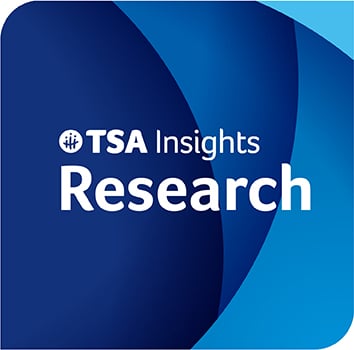Insights from the PREVeNT* Trial
*Preventing Epilepsy Using Vigabatrin in Infants with Tuberous Sclerosis Complex
Most people with TSC (Tuberous Sclerosis Complex) experience epilepsy within the first year of life. TSC is also associated with developmental delays, autism, and psychiatric disorders, particularly when epilepsy onset is early and severe. Advances in prenatal and early-life testing enable the diagnosis of TSC before the onset of seizures, facilitating early identification of infants at risk of epilepsy.
About this study
The PREVeNT trial compared treating infants with the anti-epileptic drug vigabatrin at the initial detection of seizure activity on electroencephalogram (EEG) versus at the onset of seizures. The study aimed to assess whether this earlier intervention could improve the developmental outcomes of infants with TSC and decrease the likelihood of severe seizures.
How the study was conducted
The PREVeNT trial was conducted at 13 TSC clinics across the United States. It involved 84 infants aged 6 months or younger who had been diagnosed with TSC. Infants meeting the diagnostic criteria for TSC, without a history of seizures or evidence of subclinical seizures on EEG, were enrolled.
Infants underwent regular EEG using a standardized method in the ‘watchful waiting’ phase (ie the phase where infants were enrolled in the trial and seizure activity had not started), where EEG sessions occurred every 6 weeks until 12 months of age, followed by sessions every 3 months until 24 months.
Infants stayed in the ‘watchful waiting’ phase until an abnormal EEG with specific patterns appeared. Infants were randomly selected using EEG biomarkers- certain brain wave patterns in in the infant’s EEG- to receive either vigabatrin or a placebo. Treatment was “blinded” so that it was not known which treatment was being received. All participants followed a safety protocol, including eye examinations.
Developmental and epilepsy-related results were assessed at 24 months of age, with follow-up until 36 months. Psychologists, who were also unaware of treatment details, conducted assessments using standardized cognitive and behavioural assessment tools. Developmental delays led to referrals for appropriate interventions based on testing results.
Outcomes of the study
Out of the 84 infants initially enrolled, 12 were excluded during screening, 4 infants received open-label vigabatrin directly due to the severity of their seizures and 12 were not randomised due to consistently normal EEG results.
The remaining 56 infants were randomly assigned to either early vigabatrin (29 out of 56) or placebo (27 out of 56). Nineteen participants from the placebo group transitioned to open-label vigabatrin following the occurrence of the first seizure.
Cognitive development scores were similar among all the infants. No significant differences were observed in overall epilepsy incidence, drug-resistant epilepsy prevalence at 24 months, time to the first seizure post-randomization, or secondary developmental outcomes. The time to the first focal seizure was also comparable between the treatment groups. However, the infants in the vigabatrin treatment group had a later onset and lower incidence of infantile spasms compared to those in the placebo group. The proportion of treatment-resistant spasms did not differ between the 2 groups. Adverse events were also comparable in both groups, including one infant with eye-related changes and 4 infants who had changes on brain magnetic resonance imaging (MRI).
Conclusions of the study
In this trial, early treatment with vigabatrin delayed the onset and reduced the occurrence of infantile spasms in infants with TSC. However, this preventative effect was not observed for other types of seizures, such as focal seizures or drug-resistant epilepsy.
Notably, the researchers also found no measurable impact on cognitive outcomes at the age of 2 years.
The EEG biomarker used in the PREVeNT study was moderately effective in anticipating seizures. However, some infants with abnormal brain activity on EEG did not experience seizures, while others with normal EEG had clinical seizures. This suggests that while EEG can predict impending epilepsy in infants with TSC, it is not always correct.
Implications of the study
The PREVeNT trial indicates that the preventative effects of vigabatrin are limited to infantile spasms and does not influence the onset of focal seizures. Moreover, the findings indicate that delaying or preventing infantile spasms does not result in measurable improvements in cognitive outcomes at the age of 2.
Ongoing research is exploring alternative treatments targeting epilepsy prevention in TSC, such as mTOR inhibitors. The TSC-STEPS clinical trial is currently underway in Australia and the United States to evaluate the benefits of early treatment with sirolimus, an mTOR inhibitor, in infants under 6 months of age with TSC.
The findings of the PREVeNT trial highlight the importance of discussing the timing and potential benefits of anti-seizure medication before the onset of epilepsy, especially for infants with TSC showing abnormal brain activity on EEG. Further analysis of serial EEGs may reveal additional features that can predict epilepsy, specific seizure types, the risk of drug-resistant epilepsy (DRE), or adverse effects on developmental outcomes. Establishing guidelines for EEG surveillance, informed by the results of studies like PREVeNT, will be valuable for health care providers.
Bebin, E. M., Peters, J. M., Porter, B. E., McPherson, T. O., O’Kelley, S., Sahin, M., Taub, K. S., Rajaraman, R., Randle, S. C., McClintock, W. M., Koenig, M. K., Frost, M. D., Northrup, H. A., Werner, K., Nolan, D. A., Wong, M., Krefting, J. L., Biasini, F., Peri, K., Cutter, G., … PREVeNT Study Group (2023). Early Treatment with Vigabatrin Does Not Decrease Focal Seizures or Improve Cognition in Tuberous Sclerosis Complex: The PREVeNT Trial. Annals of neurology, 10.1002/ana.26778.
Full paper available at: https://doi.org/10.1002/ana.26778
DISCLAIMER
This information is intended to provide some insights into recent TSC-related research. It is not intended to, and it should not, constitute medical or other advice. Readers are warned not to take any action without first seeking medical advice.

